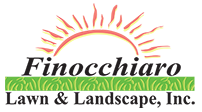Summer Bulletin
Your Summer Treatment provides:
o Fertilization to strengthen the lawn’s ability to resist insects, diseases and summer stress.
o Liquid Weed Control – is spot-sprayed in every service only where weeds are present and not broadcast across the entire lawn. This product is “rain-fast,” which means that this weed control is not washed away nor does it lose its effectiveness with rain. It controls broad leaf weeds that are present on the lawn and prevents future weeds.
o Insect Control for sod webworms, chinch bugs, billbugs and grubs.
o Grub-proofing not only to prevent grubs from eating the roots of your turf, but also to control Japanese beetles from attacking your plants. All of this is done safely with a product that will not harm earthworms or other beneficial insects.
o Fungicide is spot-sprayed to control serious diseases that are present or to prevent diseases that have damaged areas of your lawn in the past.
o Crabgrass, Nutsedge, Thistle, Dallisgrass, Nimblewil and Stiltgrass Controls is spot-sprayed
as needed.
Watering Procedures
1. If your lawn has received a ½ inch or more of rain after our service application, then the products are properly watered in. If there is no rainfall, then you need to apply a ½ inch of water;preferably before you mow your lawn, especially if you are not recycling the grass clippings.
2. Be sure that your lawn is watered once a week if there is not measurable rainfall, and twice during prolonged hot spells — soaking the soil to a depth of 4 to 6 inches.
3. Begin your watering program early before the lawn shows signs of stress, which means less water will have to be applied to replenish any moisture lost in the soil.
4. Preferably water in the morning or early afternoon – just be sure that your lawn has time to dry out before evening.
5. For my customers who have a sprinkler system, you will need to water three times a week
because of the amount of time needed to ensure that each zone is properly watered. Please do not set the system to come on the day your lawn is scheduled to be mowed.
Mowing Procedures
1. Wait at least 24 hours after your lawn service is completed to mow your lawn.
2. Use a sharp blade — dull cuts on grass blades have been proven to cause fungus problems
in turf.
3. Mow at the proper height – I recommend adjusting your lawn mower up to 4 inches for regular-sized lawns or 4 to 4-1/2 inches for larger lawns. Mowing the lawn higher will increase root depth, retains moisture longer and helps to reduce weed and disease development. In addition, it makes mulching clippings easier by providing more air space between the mowing blade and the soil. If you have someone mowing your lawn for you, please make sure to tell him to mow at this height.
4. Mow with regularity only removing one-third of the grass blades at one time.
5. Alternate mowing directions.
6. When possible, mow your lawn only when grass is completely dry.
7. Grass clippings consist of water and nutrients. Recycling or mulching clippings returns moisture and nutrients back to the soil, requiring less fertilizer and watering for your lawn. During the Spring’s rapid growth period to avoid excessive clippings not being properly factionalized on your lawn, I would advise mowing your lawn every five days until the rate of grass growth slows, usually in early June. If bad weather prohibits your normal mowing schedule, bagging or collecting grass clippings a few times will not affect your soil moisture or nutrient’s level.
